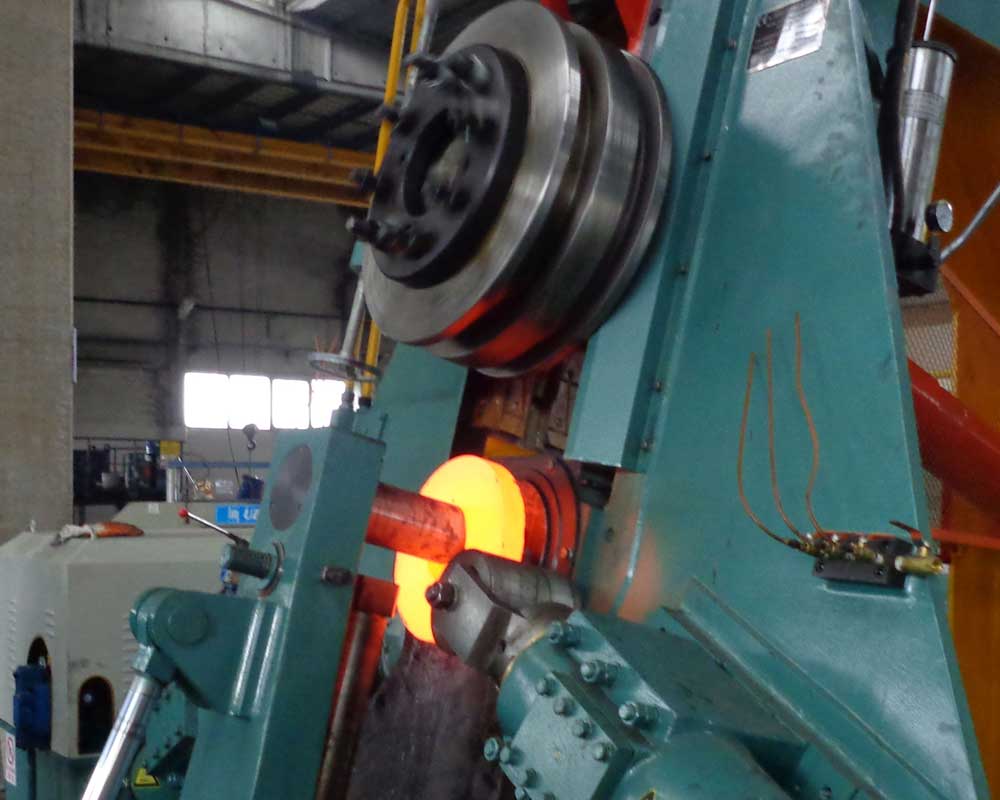The process features of the rolling ring machine
The process features of the rolling ring machine include the following:
-
The equipment has a small tonnage but a wide processing range. The ring rolling process involves localized pressure and continuous minor deformation, with a small contact area between the workpiece and the mold. Therefore, the deformation force required is small, resulting in a low equipment tonnage.
-
High material utilization rate. The sectional shape of the rolled ring is closer to the finished product, resulting in a minimal machining allowance.
-
Excellent product quality. The metal fibers in the rolled ring are continuously distributed in the circumferential direction, which aligns well with the force and wear conditions during part usage. In most cases, the inner structure of the rolled ring is dense, with small grains, and the comprehensive mechanical properties are significantly superior to rings processed by other methods.
-
Good working conditions and high productivity. Ring rolling is similar to static rolling, with virtually no impact, vibration, low noise, easy operation. The high degree of mechanization and automation significantly reduces workers' labor intensity.
-
Low production cost. Compared to free forging, there's lower material consumption, lower energy consumption, lower comprehensive production cost, resulting in better economic efficiency.
-
Currently, the largest ring rolling machine in China is D53K-12000, capable of rolling 50-ton rings with a maximum outer circle reaching 12000mm.






